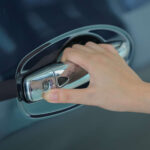Let’s not kid around. It happens; the brake fluid cap was put on the wiper blade when checking the fluid, but it didn’t go back on; the cars been driven a hundred yards, and the cap is now lost. Not what do you do; can you drive without a brake fluid cap will undoubtedly cross your mind. In this article, you will find that information and what to do if you find yourself in this position.
What Is the Purpose of the Brake Fluid Reservoir Cap?
Brake fluid caps serve a few different purposes: to stop contaminants from getting to the brake fluid. If contaminates get into the fluid, the boiling point will be lowered.
Number two is to keep the critical component when braking, the brake fluid inside the brake reservoir. Without brake fluid, car brakes will not operate.
Can You Drive Without a Brake Fluid Cap?
You should avoid driving without the brake fluid cap; it can have serious consequences!
Although the car will continue to stop as it should in the short term, there are a few things that can happen if continuing to drive without a cap; first, the brake fluid can spill out of the reservoir; if the brake fluid drops below a certain level, air will be drawn into the master cylinder when braking and the brakes will not operate when you press the pedal.
Secondly, what will happen is the brake fluid will get contaminated by debris, and moisture will be absorbed into the brake fluid. Hydraulic brake fluid is not compressible, so when you press the pedal, the same force is applied to the brake pads to stop the car. When air or moisture contaminates get into the brake fluid brake pedal will become spongy because these contaminates can be compressed. Trying to stop the vehicle when the brake pedal has sunk to the floor is scary, and by the way, the only way it will stop is to use the handbrake.
The brake fluid system is a sealed unit that gets bled to remove air from the fluid, and as the brake fluid reservoir cap’s job is to stop air and debris from entering the brake system, driving without the cap should be done in an emergency only.

What to Do in an Emergency
Let’s be realistic. You’re in an emergency, the brake fluid cap is missing, and you must drive. Before you read any further, do not take the risk if it is raining or you’re in a particularly humid environment! There is a much higher risk of water getting into the brake fluid, causing the brakes to fail.
Driving any distance can be enough to cause an issue, so only do so in an absolute emergency. If you find yourself in this position, drive carefully and slowly, not fast going around corners, to risk the chances of the fluid spilling out.
Remember you must have the brake fluid thoroughly flushed and replaced to remove the moisture and trapped air alongside a new cap. It is much better to bodge a cap together and seal the top of the reservoir.
What to Do if the Brake Fluid Cap Is Missing
Apart from the obvious replacing the cap, you can continue to drive as normal if you make a temporary cap.
If the level is correct, the brake fluid in the reservoir is not under high pressure. So, there is not much danger of anything getting sucked into the reservoir as long as it is covered. The best method to cover the brake fluid reservoir when the cap is missing is to use cling film or aluminum foil to cover the reservoir cap opening and then use a rubber band or cable tidy to secure the makeshift cap. This way, the brake fluid is protected from the elements, and driving won’t be so much of a problem if you have to wait for a new cap.
Once you get a new cap, it would be wise to replace the brake fluid, especially if you’ve driven the car with the makeshift cap.
Final Thoughts
The brake fluid cap is a vital component that you should only drive without in an emergency. You may see on the internet stories of people having gone weeks without one; this is just a flip of the coin; one person will have an issue, the other won’t. Instead of driving without a cap, creating a makeshift cap with a few household items is a much better idea!









